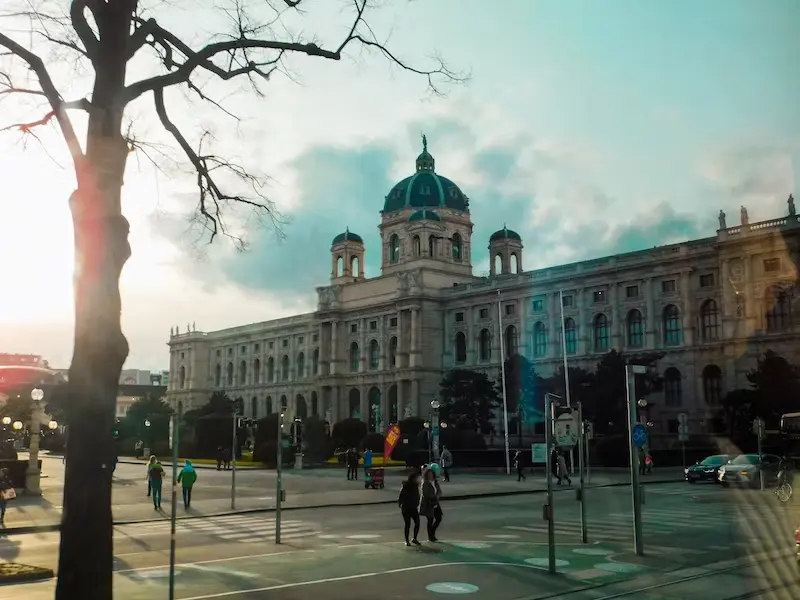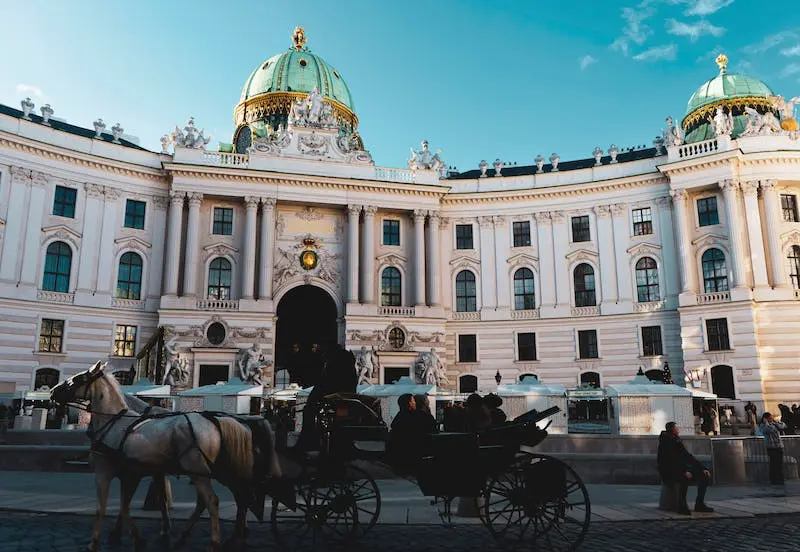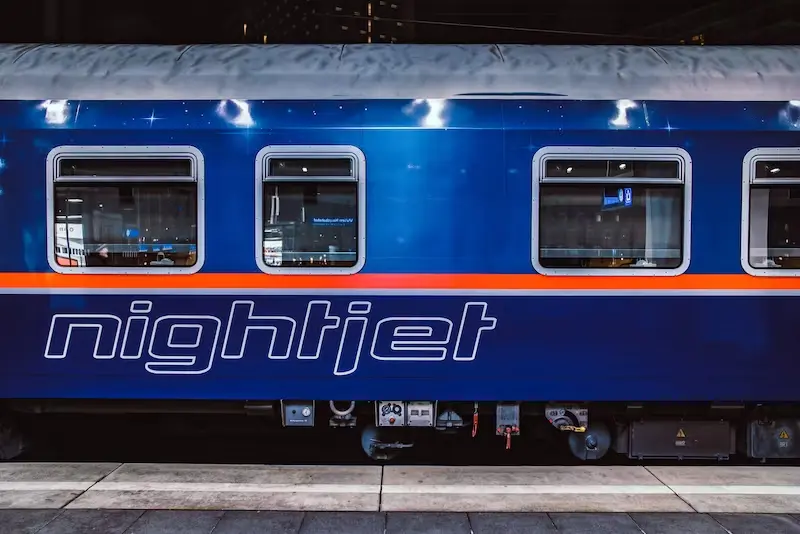Unraveling Vienna's Imperial History For Beginners

Vienna, the imperial capital of Austria, is a city brimming with historical grandeur and timeless elegance. For those new to its charm, "Vienna for beginners" would unfold as a journey through magnificent palaces, majestic opera houses, and museums that are the guardians of centuries of culture and innovation.
Navigating through Vienna, Austria, presents a profound exploration into centuries of history, where each cobblestone and corner narrates tales of empires past, glorious music, and art, creating a vibrant tapestry that unites the city with other European gems like Budapest. Crowned by the magnificent Opera House, Vienna stands as a beacon of rich cultural heritage and elegance. Here, in a city where history serenades the present, visitors find themselves amidst a timeless symphony of culture, enabling enchanting getaways into an atmosphere infused with an enduring legacy of European magnificence and sophistication.
Before embarking on a journey through its illustrious past, utilize the Vienna Central Station luggage storage facility by Nannybag to securely stow away your luggage. Nannybag offers this service at an affordable rate, starting at just 6 euros per bag per day, ensuring you can explore Vienna's imperial legacy without the hassle of carrying your bags. Now, let's step back in time to unveil the charm of Vienna's historical wonders, with a beginner-friendly guide to navigate through the city's rich heritage, all while keeping your budget in check.
The Habsburg Empire
Understanding Vienna, Austria, begins with exploring the enduring legacy of the Habsburg Empire. A linchpin in the history of Vienna and a dominant force in European politics from the 14th to the early 20th century, the Habsburg Emperors left an indelible mark on the city's architecture, culture, and traditions. Their extensive rule intricately wove the fabric of Viennese society, embedding regal magnificence and artistic flourish within the city’s identity.
Schönbrunn Palace
Schönbrunn Palace, the esteemed summer residence of the Habsburg monarchs, is a magnificent testament to Vienna's imperial past. Its lush gardens and lavish interiors echo the 18th-century opulence, embodying the pinnacle of architectural and cultural grandeur fostered by the Habsburg rulers.
Belvedere Palace
Belvedere Palace, a majestic ode to the luxurious lifestyles of Vienna’s historical elite, beautifully captures the essence of imperial indulgence. Comprising two grand palaces surrounded by enchanting gardens, it offers a vivid exploration into the world of Habsburg royalty and 19th-century aristocratic elegance.
Hofburg Imperial Palace
The Hofburg Imperial Palace, once the throbbing heart of Habsburg power, heralds the extraordinary reign of the emperors. Its grand halls and museums unfurl the tapestry of Viennese royalty, providing a detailed and immersive glimpse into centuries of ruling dynasties and their monumental impact on the history of Vienna.

Vienna State Opera
An emblem of Vienna’s rich cultural tableau, the Vienna State Opera, is where the illustrious sounds of Mozart, Beethoven, and many more legendary composers reverberate. This landmark encapsulates the city’s profound musical legacy, continuing to be the epicenter of operatic excellence and creativity.
Austro-Hungarian Empire
In the historical tapestry of Vienna, Austria, the Austro-Hungarian Empire emerges as a vibrant thread, weaving tales of cultural flourish and architectural splendor. This epoch was marked by an explosion of artistic and architectural triumphs that glorified the city’s landscapes, turning Vienna into a nexus of European culture and politics during the 19th century. The Empire catalyzed a mosaic of cultural interactions, leaving a legacy of magnificent buildings and a reservoir of diverse traditions that continue to characterize Vienna’s unique allure.
The Onset of Modern Art
Vienna’s position as a crucible of modern art became profoundly etched in the annals of history during the late 19th and early 20th centuries. The city's artistic realms blossomed, nurtured by revolutionary icons like Gustav Klimt. This period marked a transformative phase where traditional norms were challenged, and creative boundaries were pushed, enhancing the city's cultural heritage with a fresh infusion of innovative art forms and styles. Vienna emerged as a pivotal epicenter of artistic renaissance and modernist explorations during this vibrant era.
World War II and Its Aftermath
World War II cast a shadow of upheaval over Vienna, shaking its architectural grandeur and societal structures. Yet, Vienna’s spirit proved resilient; the city embarked on a journey of recovery, meticulously restoring its historical treasures and weaving new threads of modernity into its rich historical tapestry. Vienna navigated through the aftermath with a steady commitment to preserving its past while embracing the dynamics of post-war reconstruction and societal rejuvenation.
Navigating the City
Vienna, a city endowed with a rich historical tapestry, offers a delightful experience in urban navigation. Its city centre unfolds as a gallery of imperial landmarks, historical museums, and architectural marvels. Vienna’s well-orchestrated public transport harmonizes with pedestrian pathways, simplifying the exploration of its multifaceted charms, from imperial resplendence to modern elegance, creating a seamless and enriching exploration experience for inhabitants and visitors alike.

Imperial Cuisine
Vienna's imperial cuisine is a sumptuous symphony of flavors that narrate the city’s rich historical saga. From the iconic Wiener Schnitzel to a spectrum of delectable pastries, Vienna’s culinary offerings represent a confluence of traditions and influences honed over centuries. Each dish is a tribute to the city’s imperial legacy, offering a delightful, gastronomic exploration of Vienna’s historical essence and culinary evolution.
Modern Day Reflections
Modern Vienna resonates with echoes of its magnificent history, seamlessly intertwining ancient elegance with contemporary vibrancy. The city flourishes as a living museum where each corner whispers tales of historical sagas, imperial magnificence, and modern innovation. In the heart of Vienna, the reflections of its imperial past continue to shimmer, adorning its present-day canvas with traces of a regal legacy that continues to shape the city’s evolving identity.
Another honorable mention goes to the Leopold Museum.

Say hello to exploring and goodbye to heavy bags!
What if you could enjoy every minute in the city without the burden of your bags?
- Safe luggage storage for a flat daily price of €4.50/luggage item
- Included luggage protection of up to €10000 in case of breakage, loss or theft
